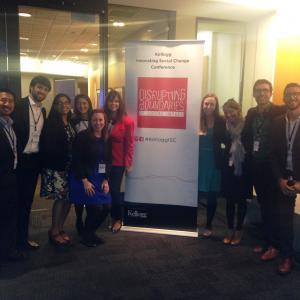
The funny thing about leading a four-time Net Impact Graduate Chapter of the Year award is that the current leadership team can lay little claim to the chapter’s success. Foundational chapter strength, it turns out, is all about building for the long term. Our charge as chapter leaders is to lead for long-term success and accelerate our chapter’s trajectory of growing impact. Our experience at the Kellogg School of Management reveals three tips to help chapter leaders do so.
1. Develop a long-term chapter strategy
While annual work plans and budgets are essential basics for effective chapter leadership, a long-term strategy allows a chapter to address goals that are larger than any one leadership team can tackle. At Kellogg, our strategic context called for our chapter to play a larger and more direct role in influencing the school’s overall social impact strategy, improving the external positioning of its social impact opportunities, and shaping its career support offerings. Because we have articulated this strategy formally, leadership teams over the next two years can continue our work toward these large goals.
2. Partner with your school administration
The strongest student chapters find strong advocates and build long-term working relationships with faculty and administrators. At Kellogg, our faculty advisor has been instrumental in our chapter’s success by making resources available to support our goals, helping to represent the student point of view at the administrative level, and teaching us how to navigate the complex dynamics of leading change within a university. To build working relationships that endure despite the yearly turnover of chapter leadership, we have explicit discussions about how we work together and diligently hand off each relationship to new chapter leadership.
3. Invest in organizational infrastructure
Though administrative tasks often feel like low value-added activities, student chapters will have a difficult time building up if they repeatedly have to recreate the wheel. Kellogg’s experience points to several tips for building a lasting organization: be obsessive about saving all key documents and e-mails, overinvest in leadership transition processes, and ensure strategic continuity by engaging the entire leadership team in setting strategy.
At Kellogg’s graduate Net Impact chapter, we view these three priorities as central to our leadership for the long term. Do you agree? What tips do you have for long-term chapter success?
